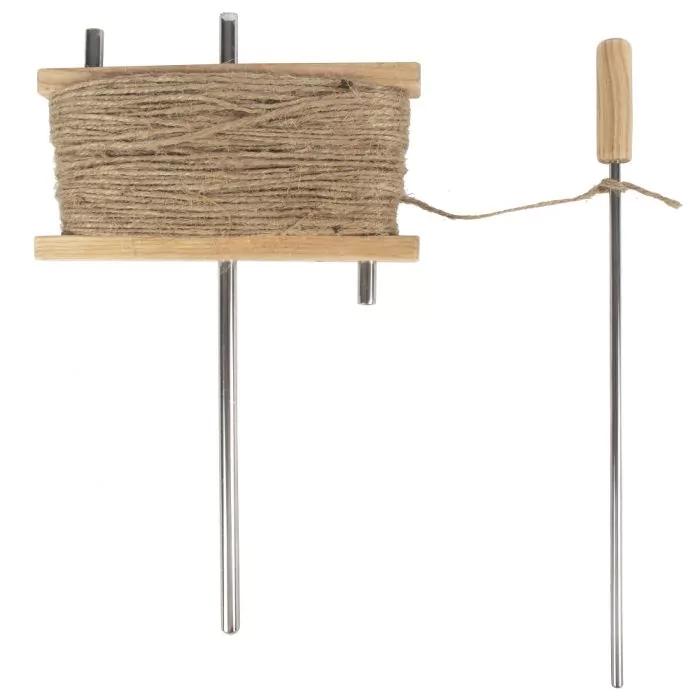
10 reasons to plant lavender in your garden
Share
10 reasons to plant lavender in your garden
Lavender is one of the most versatile and beautiful plants you can grow in your garden. That's why we believe lavender should be part of every gardener's plant collection! Lavender is not only pleasing to the eye, it also has many benefits. It attracts pollinators such as bees and butterflies, so if you want to see lots of butterflies in your garden, lavender is the perfect choice. It also repels mosquitoes and other annoying insects, making it an excellent companion for other plants that attract them. Lavender is also great for attracting hummingbirds because of its fragrant purple flowers. Growing lavender in your garden can help reduce stress, provide oils for use in crafts and natural beauty products, and much more! Check out these 10 reasons to plant lavender in your garden:
When to prune lavender?
Lavender requires regular pruning as it grows very quickly and can become a tangled mess if not maintained. The best time to prune lavender depends on what you want to achieve. In general, you should prune your lavender in the spring (March/April). You can prune lavender at any time of the year if you have a specific reason to do so. For example, you can prune in the fall to promote better flowering the following year. If you don't prune your lavender, it can become woody, so it's a good idea to keep it under control.
How can you cut lavender?
Lavender is a very easy plant to propagate by taking cuttings. Cuttings are pieces of the mother plant that you can use to make new plants. Plant the cuttings in a pot with moist potting soil, and they will root and grow into new lavender plants in a few weeks or months. Taking cuttings is a great way to increase your lavender customer base, and the new plants will have the same fragrant lavender flowers as their parent plants. Cut off a piece of the mother plant with a shovel. Make sure that you cut both the plant above the ground and below the ground in 1 cutting and plant it again.
Lavender cuttings in 5 steps:
Fill containers with potting soil and gravel or grit. Lavender likes poor, arid soil where water drains well.
Take a cutting of 5-8 cm from the plant with a spade and remove the top.
Put the lavender cuttings into the ground up to the bottom of the leaf.
Place the cuttings in partial shade and water regularly, making sure that they do not become too moist.
Let them root for 2 months before planting them outside. A garage is ideal for rooting the lavender. Plant them in the spring March-April
How to make lavender tea
You can use both fresh and dried lavender to make a delicious and relaxing cup of tea. Boil fresh lavender flowers in water for 5 to 10 minutes to make a delicious and aromatic tea. Fresh lavender works best for this recipe so you can enjoy the lavender flowers all year round. You can also make dried lavender tea by steeping dried lavender flowers in hot water in a teapot. This delicious tea can be served with or without milk. You can also add dried lavender flowers to your bath water to relax after a long day.
Lavender is drought tolerant and easy to grow.
Lavender is a very easy plant to care for. It doesn't require much water or other nutrients, making it a great choice if you garden in a dry climate. Lavender tolerates both hot and cold weather, making it an excellent plant to include in your landscape. For best results, mix lavender with other drought-tolerant plants. Lavender is a good companion plant for many other plants. It repels pests, attracts pollinators, and can be used to help your other plants grow bigger and better. Lavender can be grown in different soil types, but dry and well-drained soil is preferred. Lavender plants are also very easy to propagate. You can start a new plant by taking a cutting from an existing lavender plant and planting it in a pot of soil.
Lavender has a wonderful scent and an important relaxing function
Lavender has been used for centuries for its calming and sweet scent. It is often used in aromatherapy and in fragrance oils, soaps, and other beauty products. You can even use lavender to make your own scented candles! However, the best way to enjoy the soothing scent of lavender is to grow your own plants. You can enjoy the beautiful lavender flowers and the wonderful scent they spread all summer long.
Lavender Suitable for most soil types.
The best thing about lavender is that it can tolerate almost any type of soil. You can grow lavender in sandy, loamy or clay soil. The plant thrives in both acidic and alkaline soil. If you want to grow lavender in sandy soil, add plenty of organic matter to improve texture and better water retention. Lavender also does well in raised beds as it does not like to be too wet.
Lavender flowers are edible
Many people do not realize that the flowers of the lavender plant are edible. Although they don't taste like traditional lavender, they are still a tasty and nutritious treat. Lavender is a great addition to baked goods such as scones, shortbread, or muffins. You can also use fresh or dried flowers to flavor syrups, iced teas and cocktails.
You can use it for natural beauty products.
Lavender is a great natural resource that you can use to make a wide variety of beauty products. You can use the flowers to make soaps and shampoos, or you can make an aromatic oil with the essential oils found in lavender. You can also use dried lavender flowers to make a fragrant pillow, or you can make a soothing bath by adding lavender to your bath water. If you want to make your own beauty products, try growing lavender in your garden. It's a great and easy way to get fresh and organic lavender for your beauty products.
Lavender repels mosquitoes
Lavender is an excellent companion plant to repel mosquitoes and other pests. Plant it near other plants that attract pests, and they will stay away from your other plants because of lavender's strong scent. You can also make a mosquito repellent spray from lavender by soaking the flowers in water and adding a few drops of lemon essential oil. If you spray this on your skin, it will keep mosquitoes away and it will smell wonderful!
Grow lavender as a living fence or hedge
Lavender is a great plant to grow as a living fence or hedge on your property. The plants grow very quickly and reach heights of 1.5 to 2.5 meters. You can also use different types of lavender for different looks and heights.
Conclusion.
Lavender is a great plant to grow in your garden for many reasons. Not only is it pleasing to the eye, it also has many benefits. It attracts pollinators such as bees and butterflies, so if you want to see lots of butterflies in your garden, lavender is the perfect choice. You can also use it to make many different beauty products. It repels mosquitoes and other pests, and it is easy to grow. You can use it to create a living fence or hedge, or you can plant it as a beautiful addition to your garden.

